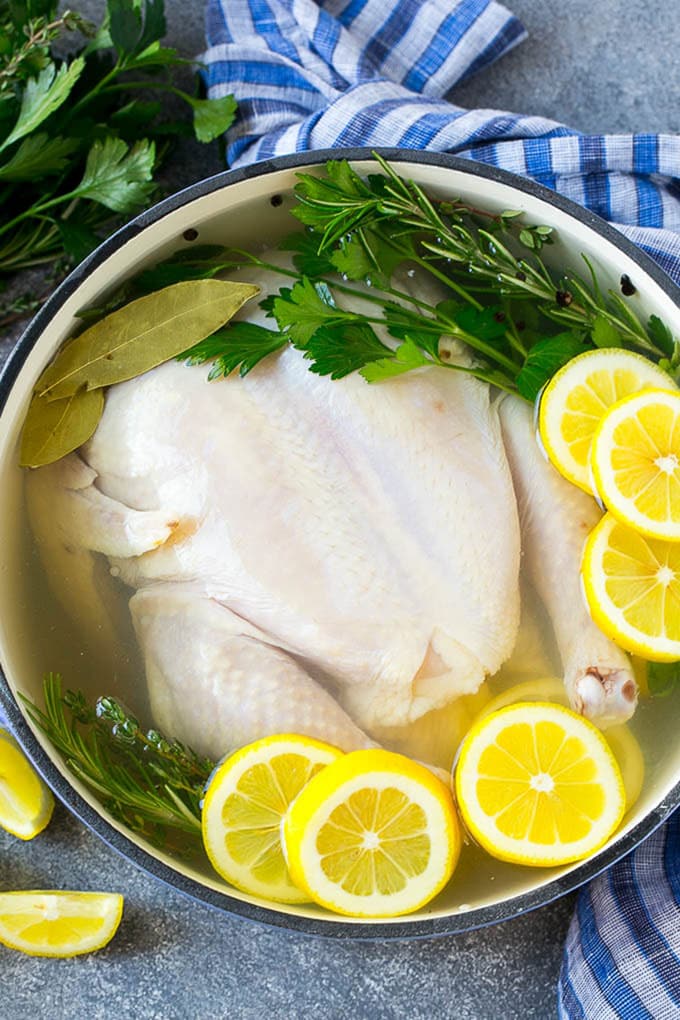
Table of Contents:
- Introduction to Chicken Brining: Why Brine Your Chicken?
- The Science Behind the Chicken Brine Recipe
- The Basic Chicken Brine Recipe
- Customizing Your Chicken Brine Recipe
- How Long Should You Brine Chicken?
- The Best Cooking Methods for Brined Chicken
- Grilled Chicken
- Roasted Chicken
- Fried Chicken
- Tips and Tricks for the Perfect Chicken Brine Recipe
- FAQs About Chicken Brine Recipe
- Conclusion
The Ultimate Chicken Brine Recipe for Juicy and Flavorful Meat
When it comes to cooking the perfect chicken, one technique that stands out above the rest is brining. Brining involves soaking the chicken in a seasoned solution of water, salt, and other ingredients, which results in a juicier, more flavorful bird. The process works wonders whether you’re grilling, roasting, or frying your chicken. In this article, we will guide you through the ultimate chicken brine recipe, explaining the benefits, the science behind brining, and tips to get the most out of this simple yet powerful cooking method.
Are you ready to take your chicken to the next level? Follow our comprehensive chicken brine recipe and prepare to be amazed!
Introduction to Chicken Brining: Why Brine Your Chicken?
Brining has been a long-standing tradition in many kitchens worldwide, from home cooks to professional chefs. So why is brining such a vital technique? It all comes down to how the process affects the meat’s texture, flavor, and moisture retention. The salt in the brine solution helps break down proteins in the chicken, allowing it to absorb moisture and seasoning. This ensures that the meat stays tender and juicy, even after cooking.
The basic chicken brine recipe consists of water, salt, and sugar, but the variations are endless. You can customize the recipe with herbs, spices, citrus, or even fruit juices to give your chicken a unique taste.
The Science Behind the Chicken Brine Recipe
Before diving into the details of the chicken brine recipe, it’s essential to understand how brining works on a scientific level. Brining is a chemical process that enhances the flavor and tenderness of meat. Here’s a breakdown of what happens when you submerge chicken in a brine solution:
- Salt Penetration: Salt breaks down the muscle fibers in the chicken, allowing them to relax and absorb liquid. This helps the meat retain more moisture during cooking.
- Osmosis: Water and flavorings from the brine move into the chicken through osmosis, while some of the chicken’s moisture moves into the brine. The salt prevents the meat from losing too much water, ensuring a juicy result.
- Flavor Absorption: By adding herbs, spices, and aromatics to your brine, the chicken absorbs these flavors, enhancing the taste of the final dish.
Using a proper chicken brine recipe ensures that your chicken stays juicy, tender, and bursting with flavor.
The Basic Chicken Brine Recipe
Now that you understand the science behind brining, it’s time to get hands-on with a simple yet effective chicken brine recipe. This basic recipe is easy to make and works well with any type of chicken—whether it’s whole, breasts, thighs, or wings.
Ingredients:
- 1 gallon of water
- 3/4 cup of kosher salt
- 1/4 cup of sugar (optional)
- 2-3 cloves of garlic, crushed
- 2 sprigs of fresh thyme or rosemary
- 1 teaspoon of black peppercorns
- Optional: a bay leaf, lemon zest, or chili flakes for added flavor
Instructions:
- In a large pot, combine the water, salt, and sugar. Stir until the salt and sugar are completely dissolved.
- Add the garlic, herbs, peppercorns, and any other optional ingredients.
- Submerge the chicken in the brine, making sure it’s fully covered. If necessary, place a weight on the chicken to keep it submerged.
- Refrigerate for 1 to 4 hours, depending on the size of the chicken. For a whole chicken, 4 hours is ideal, but for smaller cuts, 1-2 hours will suffice.
- Remove the chicken from the brine and pat it dry with paper towels before cooking.
This chicken brine recipe ensures your chicken comes out juicy and full of flavor every time. You can adjust the recipe based on your personal preferences or the dish you’re preparing. For example, adding citrus zest will brighten the flavor, while herbs like thyme or rosemary will impart an earthy aroma.
Customizing Your Chicken Brine Recipe
While the basic chicken brine recipe is a great starting point, you can elevate it by adding various ingredients. Below are some ideas to customize your brine based on the type of flavor you’re looking for:
- Herbaceous Brine: Add fresh herbs like rosemary, thyme, and sage for a fragrant, earthy taste.
- Citrus Brine: Include lemon, lime, or orange zest and juice for a bright, zesty flavor that pairs well with grilled chicken.
- Spicy Brine: Add chili flakes, crushed red pepper, or even a splash of hot sauce for a spicy kick.
- Sweet Brine: Swap out the sugar for honey or maple syrup to give your chicken a subtle sweetness that caramelizes during cooking.
- Savory Brine: Incorporate soy sauce, Worcestershire sauce, or miso paste for an umami-rich brine.
You can experiment with different combinations of herbs, spices, and liquids to create a unique chicken brine recipe that suits your taste. Keep in mind that the longer you brine the chicken, the more intense the flavors will be.

How Long Should You Brine Chicken?
One of the most common questions when using a chicken brine recipe is how long to brine the chicken. The answer depends on the size and type of chicken you’re using. Over-brining can lead to overly salty or mushy chicken, so it’s essential to follow the recommended times.
- Whole Chicken: 3-4 hours
- Chicken Breasts: 1-2 hours
- Chicken Thighs: 2-3 hours
- Chicken Wings: 1-1.5 hours
For a deeper flavor, you can brine the chicken overnight, but be cautious with the salt levels. If you’re planning to brine for more than 8 hours, consider reducing the amount of salt in the chicken brine recipe to avoid oversalting.
The Best Cooking Methods for Brined Chicken
Once you’ve brined your chicken using the ultimate chicken brine recipe, the next step is cooking it to perfection. Brined chicken can be cooked using various methods, including grilling, roasting, and frying. Here’s how to get the best results with each technique:
Grilled Chicken
Grilling is an excellent way to cook brined chicken, as it adds a smoky flavor and gives the skin a crispy texture. Here’s how to grill brined chicken:
- Preheat the grill to medium-high heat.
- Pat the chicken dry to remove excess moisture and brush it with oil.
- Grill the chicken for 6-8 minutes per side, depending on the cut, until the internal temperature reaches 165°F (75°C).
- Let the chicken rest for 5 minutes before serving.
Roasted Chicken
Roasting brined chicken yields a golden, crispy exterior and juicy meat. Here’s a simple roasting method:
- Preheat your oven to 425°F (220°C).
- Pat the chicken dry and rub it with olive oil, salt, and pepper.
- Roast the chicken for about 25 minutes for smaller cuts or up to 1.5 hours for a whole chicken, until the internal temperature reaches 165°F (75°C).
- Allow the chicken to rest for 10 minutes before carving.
Fried Chicken
Brining is especially effective for fried chicken, ensuring that the meat stays juicy beneath the crispy crust. Follow these steps for perfect fried chicken:
- After brining, pat the chicken dry and dredge it in seasoned flour.
- Heat oil in a deep pan to 350°F (175°C).
- Fry the chicken for 10-15 minutes, turning occasionally, until golden brown and cooked through.
- Let the chicken drain on paper towels before serving.
Using a proper chicken brine recipe before frying guarantees that your fried chicken will be moist and flavorful on the inside, with a crunchy, golden crust on the outside.

Tips and Tricks for the Perfect Chicken Brine Recipe
Here are a few tips to help you get the most out of your chicken brine recipe:
- Use Kosher Salt: Kosher salt is preferred for brining because its coarse texture dissolves easily in water, ensuring even distribution.
- Always Refrigerate: It’s essential to brine your chicken in the refrigerator to prevent the growth of harmful bacteria.
- Dry Your Chicken: After brining, make sure to pat the chicken dry before cooking to achieve a crispy skin.
- Balance the Salt: If you plan on brining for an extended period (more than 4 hours), reduce the salt in the chicken brine recipe to avoid oversalting.
- Taste the Brine: Before submerging the chicken, taste the brine to ensure it has the right balance of flavors. It should taste slightly salty but not overwhelmingly so.
By following these tips, you can ensure that your chicken brine recipe produces tender, juicy, and flavorful chicken every time.
FAQs About Chicken Brine Recipe
What does brining do to chicken?
Brining enhances the moisture content and flavor of chicken by allowing it to absorb water, salt, and seasoning. It helps keep the chicken juicy and tender during cooking.
How long should I brine chicken?
The brining time depends on the size of the chicken. Whole chickens should brine for 3-4 hours, while smaller cuts like breasts or thighs should brine for 1-2 hours.
Can I use table salt instead of kosher salt in my chicken brine recipe?
Yes, but be mindful of the salt ratio. Table salt is finer and more concentrated than kosher salt, so use less if substituting. For every 1 cup of kosher salt, use 3/4 cup of table salt.
Do I need to rinse the chicken after brining?
Rinsing the chicken after brining is optional. However, if you’re concerned about excess salt, a quick rinse will remove any residue.
What can I add to my chicken brine recipe for extra flavor?
Feel free to add herbs, spices, garlic, citrus zest, and even fruit juices to your brine. These ingredients will infuse the chicken with additional flavor.
Can I brine chicken too long?
Yes, over-brining can result in overly salty or mushy chicken. Follow the recommended brining times to avoid this.
Conclusion
Brining is a simple yet effective technique to ensure that your chicken turns out moist, tender, and packed with flavor. Whether you’re grilling, roasting, or frying, the chicken brine recipe we’ve shared will enhance your cooking and take your meals to the next level. With a few ingredients and some patience, you can transform an ordinary chicken into a culinary masterpiece.
Don’t forget to experiment with different flavorings to customize your chicken brine recipe to your taste. And for more amazing meat recipes, check out Meat Love Recipes for all the inspiration you need!

